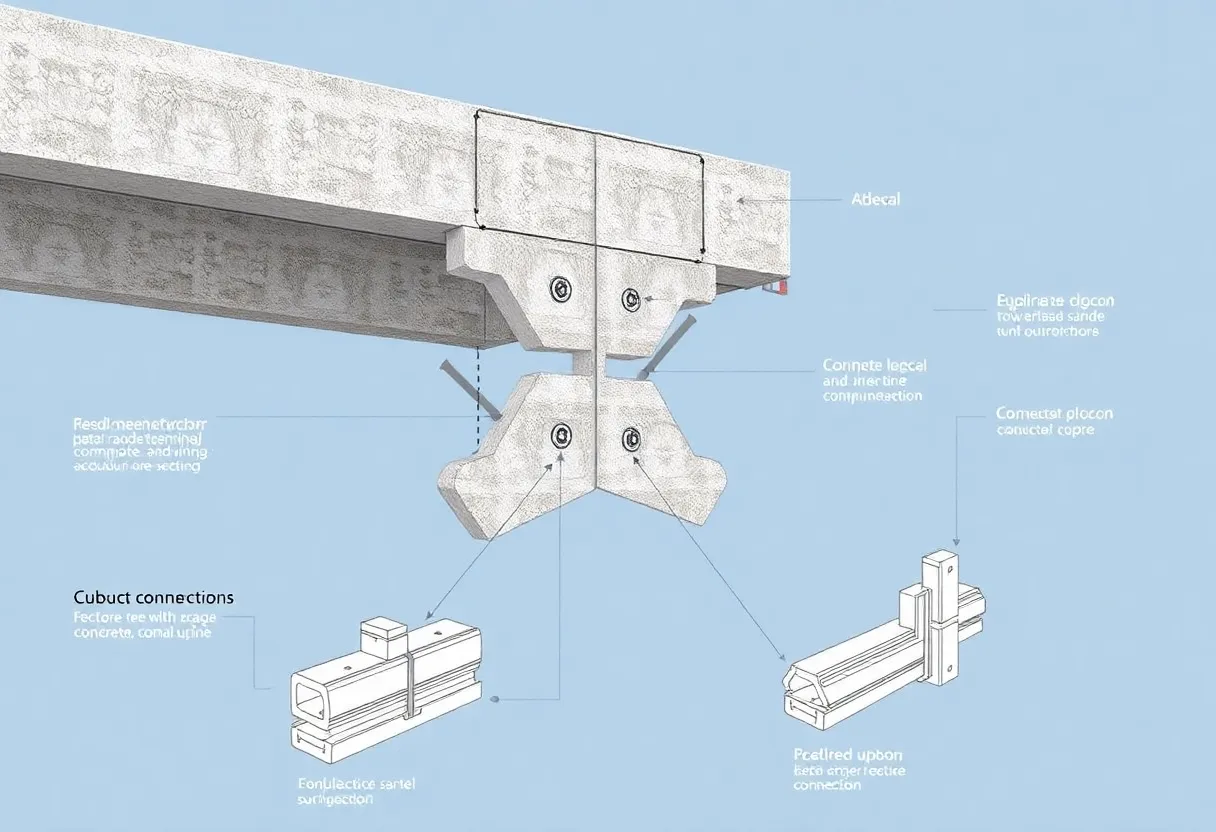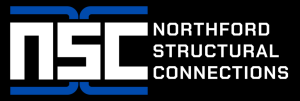A Beginner’s Guide to Double-Tee Shear Connections
Double-Tee shear connections are vital components in the field of precast concrete construction. This guide aims to inform beginners about the essential aspects of double-tee shear connections, their design, installation, and significance within the precast concrete framework.
Understanding Double-Tee Shear Connections
Double-tee shear connections refer to a method of joining precast concrete elements, specifically double-tee slabs, to other structural components. These connections play a critical role in transferring loads and ensuring the stability of the entire structure.
What is a Double-Tee Slab?
A double-tee slab is a precast concrete element characterized by its shape, resembling the letter “T.” This design provides efficient load-carrying capabilities while minimizing material use. The double-tee slabs are primarily used in parking garages, roofs, and floor systems.
The Importance of Shear Connections
Shear connections are essential for maintaining the integrity of a structure. They facilitate the transfer of shear forces between adjoining structural elements. In double-tee systems, these connections are particularly crucial, as they help manage the lateral and vertical loads that the slabs experience during their service life.
Types of Double-Tee Shear Connections
Various types of shear connections can be implemented in a double-tee configuration, each with its advantages and considerations. The most common types include:
1. Shear Key Connections
Shear key connections utilize vertical protrusions, or shear keys, which engage with the adjacent slab. They can significantly enhance the shear resistance between units. This connection type minimizes relative movement under load, ensuring stability.
2. Dowel Bar Connections
Dowel bars are embedded into the ends of double-tee slabs to create a mechanical connection with the adjoining slab or beam. They facilitate load transfer while allowing some degree of movement, essential for accommodating thermal expansion and contraction.
3. Grout-Filled Connections
Grout-filled connections involve filling the gap between adjacent slabs with a high-strength grout. This method improves shear strength and enhances the transfer of forces, providing a durable solution for shear connection needs.
Design Considerations for Double-Tee Shear Connections
When designing double-tee shear connections, several factors must be taken into account to ensure performance and functionality:
1. Load Requirements
Determining the load requirements is crucial in designing shear connections. Factors include live loads, dead loads, environmental conditions, and potential seismic forces. These considerations are essential for sizing the connection appropriately.
2. Material Compatibility
Using compatible materials is vital to prevent issues such as differential movement or cracking. The connections must accommodate the materials used in the double-tee slabs and the supporting elements effectively.
3. Detailing
Proper detailing of the shear connections affects both construction efficiency and structural integrity. Accurate specifications and drawings help ensure the connections are built as intended and function correctly in service.
Installation of Double-Tee Shear Connections
Installing double-tee shear connections requires precision and attention to detail. The following are key steps in the installation process:
1. Preparation of Structural Elements
Both the double-tee slabs and the supporting structure must be adequately prepared before installation. This includes surface cleaning, checking for level, and verifying the alignment of elements.
2. Connection Assembly
During assembly, shear keys, dowel bars, or other connection devices should be installed according to the design specifications. Ensuring that these components are in place is critical to the overall strength of the connection.
3. Grouting or Bonding
If grout-filled connections are specified, the grout should be mixed and applied per the manufacturer’s instructions. Ensuring proper curing time is essential for maximum strength.
Quality Control and Inspections
Implementing quality control measures is paramount throughout the installation of double-tee shear connections. Regular inspections ensure compliance with design specifications, aiding in the early identification of potential issues.
1. Visual Inspections
Visual inspections provide immediate feedback on the quality of the connections. Inspectors should check for any voids, misalignments, or insufficient material coverage during the installation phase.
2. Load Testing
Load testing may be performed on specific connections to verify their capacity. This process involves applying loads in a controlled manner and observing the connection’s behavior under stress.
Performance Factors of Double-Tee Shear Connections
The effectiveness of double-tee shear connections relies on various performance factors:
1. Shear Capacity
Each connection must possess sufficient shear capacity to handle the applied loads without failure. Mathematical models and empirical testing aid in determining the required shear strength.
2. Flexibility and Ductility
Connections need to allow for some movement without compromising structural integrity. Designing for flexibility ensures connections can accommodate thermal expansion, settling, or other movements that occur during the lifecycle of the structure.
3. Corrosion Resistance
Corrosion can severely affect the durability of shear connections. Selecting materials with appropriate corrosion resistance is essential, especially in environments exposed to moisture or chemicals.
Conclusion: The Future of Double-Tee Shear Connections
Double-tee shear connections are fundamental in the precast concrete industry. Understanding their design, installation, and performance variables can lead to improved structural outcomes. For beginners, grasping these concepts is the first step toward mastering the complexities of precast concrete construction.
As innovations in materials and technologies continue to evolve, the efficiency and effectiveness of double-tee shear connections will only enhance. Continued education and adherence to best practices will play a pivotal role in shaping future construction efforts.
Author: STAFF HERE CHARLESTON
The CHARLESTON STAFF WRITER represents the experienced team at HEREcharleston.com, your go-to source for actionable local news and information in Charleston, Charleston County, and beyond. Specializing in "news you can use," we cover essential topics like product reviews for personal and business needs, local business directories, politics, real estate trends, neighborhood insights, and state news affecting the area—with deep expertise drawn from years of dedicated reporting and strong community input, including local press releases and business updates. We deliver top reporting on high-value events such as the Spoleto Festival USA, Charleston Wine + Food Festival, and the MOJA Festival. Our coverage extends to key organizations like the Charleston Metro Chamber of Commerce and the Charleston Museum, plus leading businesses in tourism and maritime industries that power the local economy such as South Carolina Ports Authority and the Charleston Visitor Center. As part of the broader HERE network, including HEREaiken.com, HEREbeaufort.com, HEREchapin.com, HEREcharleston.com, HEREclinton.com, HEREcolumbia.com, HEREgeorgetown.com, HEREgreenwood.com, HEREgreenville.com, HEREhiltonhead.com, HEREirmo.com, HEREmyrtlebeach.com, HEREnewberry.com, HERErockhill.com, HEREspartanburg.com, HEREaustin.com, HEREcollegestation.com, HEREdallas.com, HEREhouston.com, and HEREsanantonio.com, we provide comprehensive, credible insights into South Carolina's dynamic landscape.







